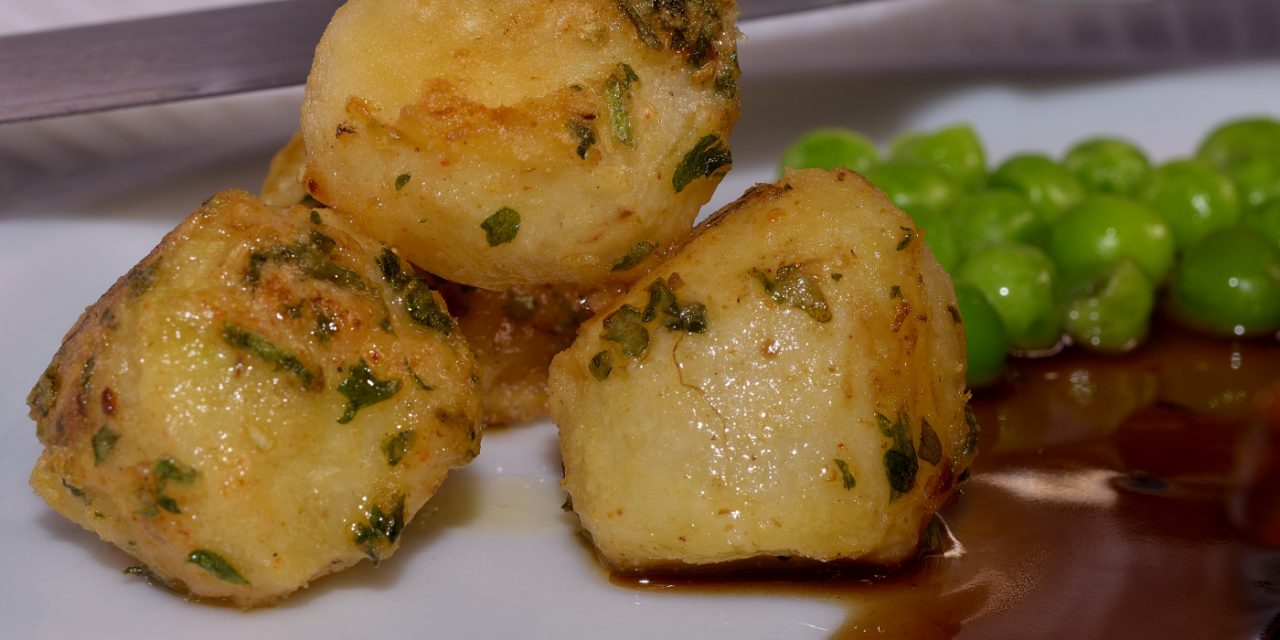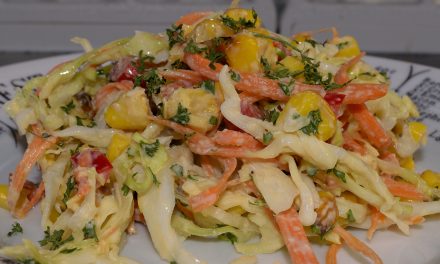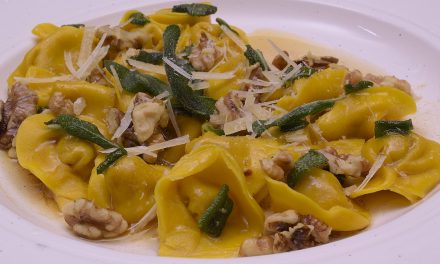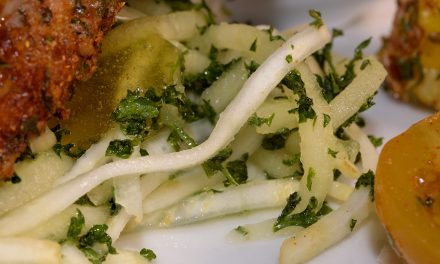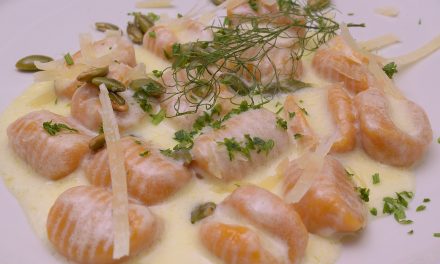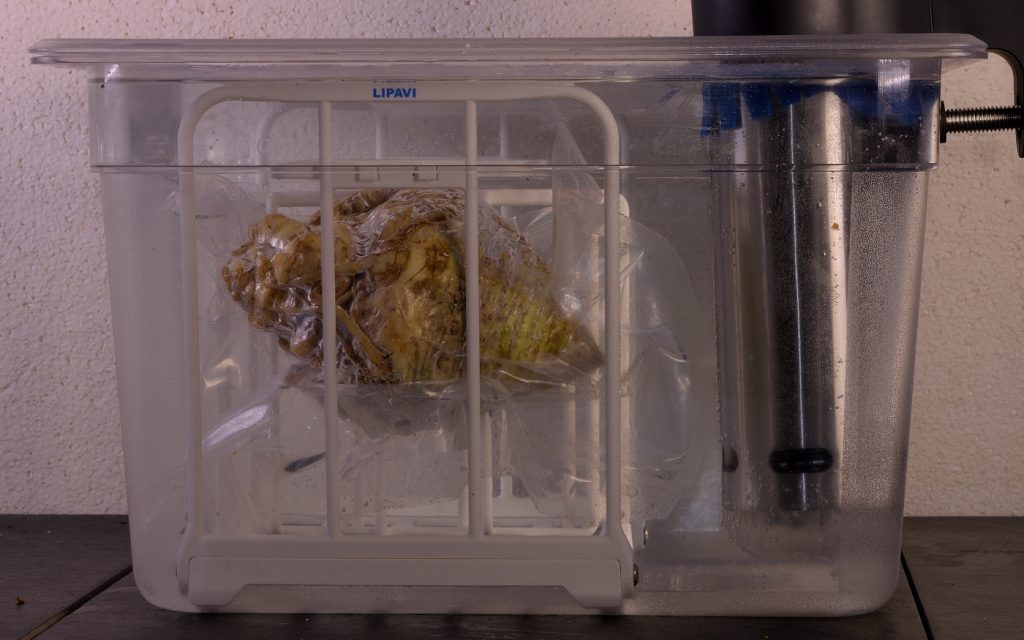
What is a hypocotyl?
Celeriac/celery root is not the root of the celery that we see in the store–the thing we use to garnish wings and Blood Mary cocktails. It is a separate plant. It HAS roots, but the knob itself occurs BETWEEN the stalks and the roots. Now that we have settled that, who eats celeriac, and why is it even in the store?
Right next to the turnips
Celeriac is mentioned in ancient texts (by a different name), including the Iliad and the Odyssey, so somebody must have been eating it. Wikipedia says it’s popular in South America. It can be grated into a slaw like its cousin the carrot. It can be cooked and mashed like a potato.
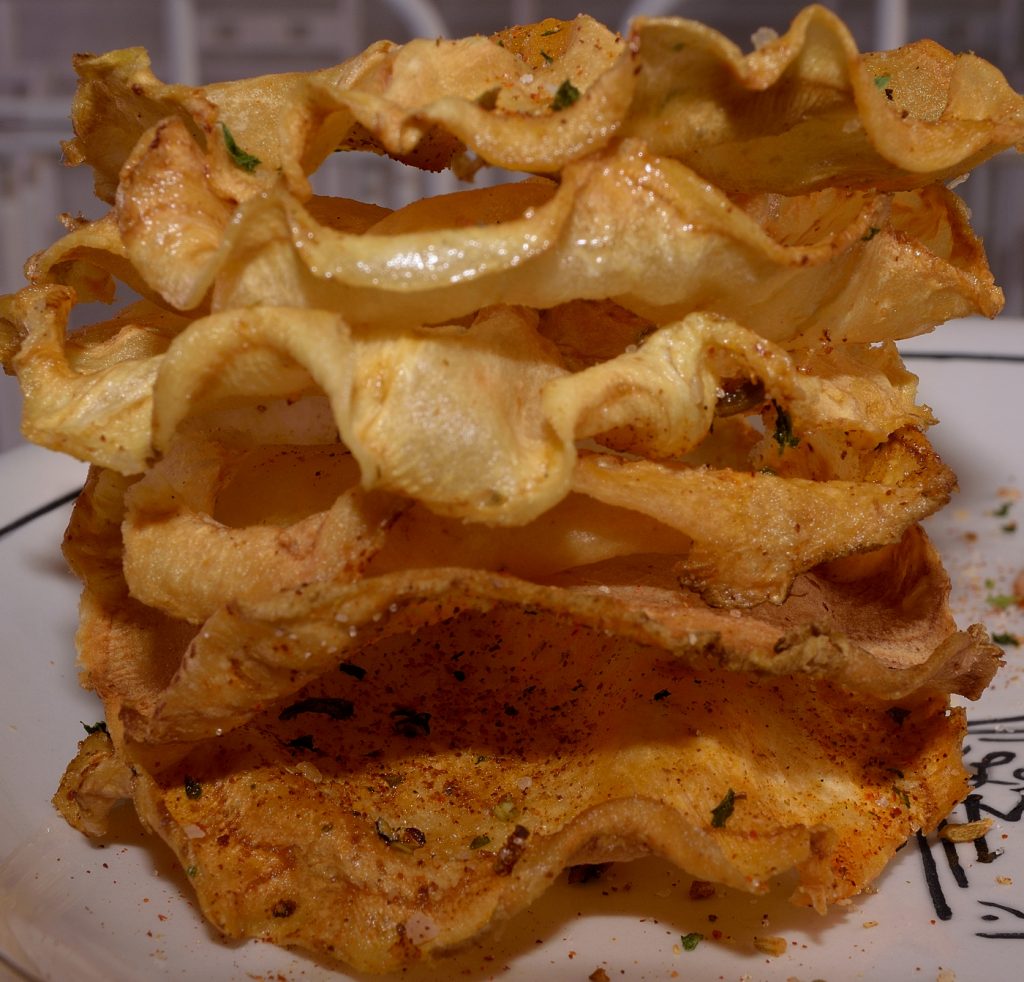
It can be peeled raw, sliced thin and deep fried into chips as shown above. It’s bothersome to peel when raw, but sous vide will rescue us from the worst part of that chore.
Celeriac does taste of celery, I will give it that. In the raw state, it should be heavy and hard like a turnip, taro root or rutabaga. Unfortunately, it is so rarely consumed it tends to dry out on the shelf. The outward appearance will look normal, but the hypocotyl itself will be light and feel soft. Cut open, it is likely to have pulpy, fibrous flesh and a large hollow in the center. In this state, it is hardly worth bothering with.
Procedure:
Preheat your sous vide bath to 183 F/84 C. As always, vacuum seal your celery root in a heat rated bag…
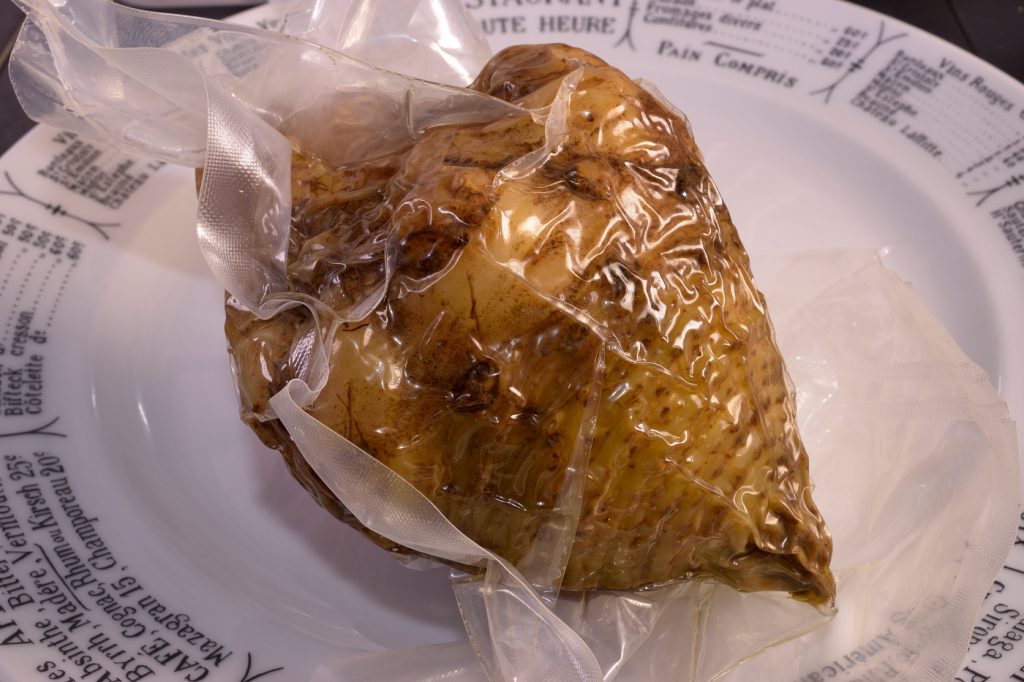
Process at 183 F/84 C for 90 minutes. It takes longer than a potato but about the same time as a beet. It should give a little when you squeeze the bag–soft enough to pierce with a skewer. After processing, submerge in iced tap water until the package achieves 70 F/21 C. Refrigerate at 40 F/4 C until you are ready to proceed.
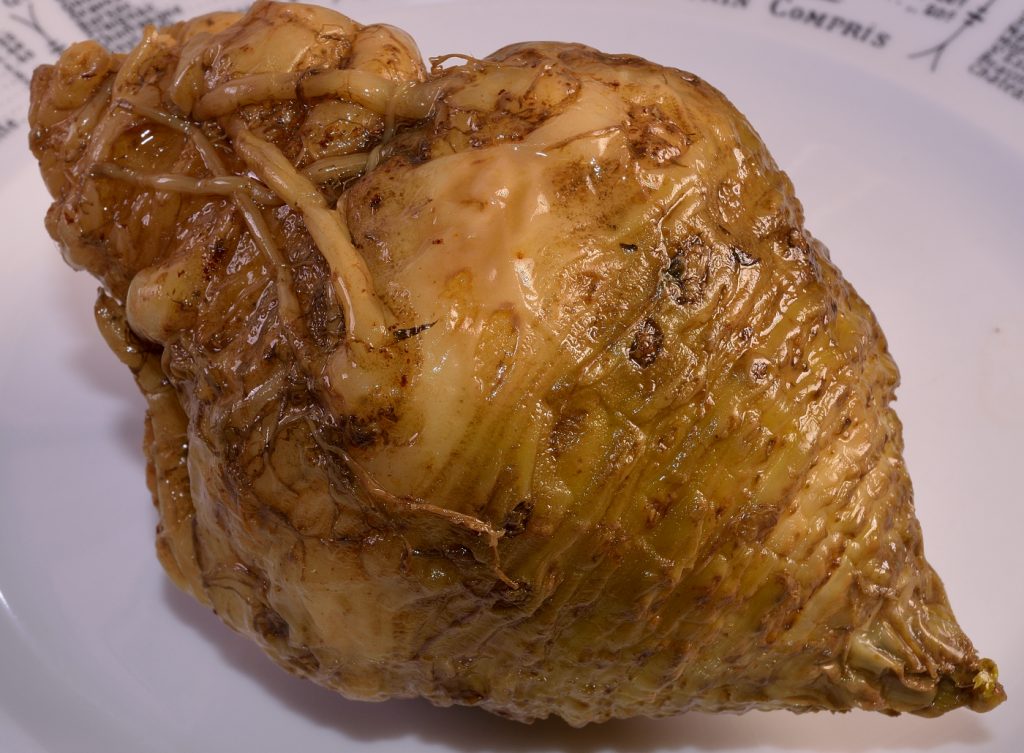
Once chilled, remove from the package and pat dry. Celeriac always looks a little dirty but no amount of scrubbing will remove the discoloration.
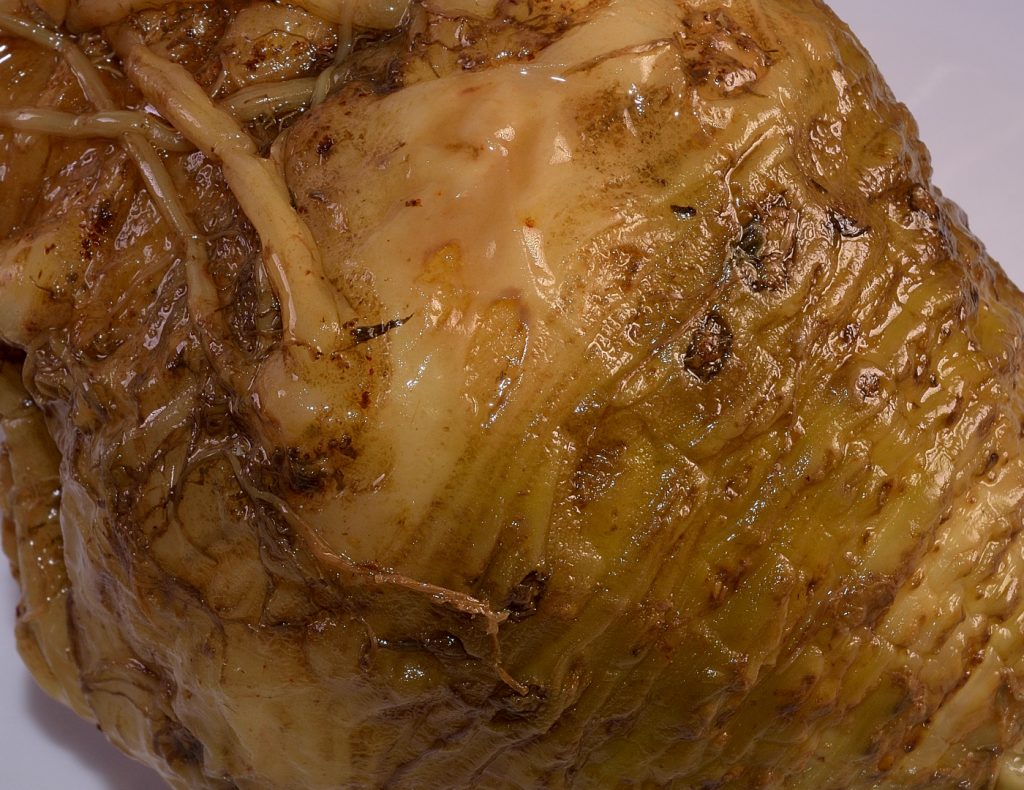
It’s not going to get mistaken for an apple or an orange. There’s no other way to say it–it’s kind of ugly.
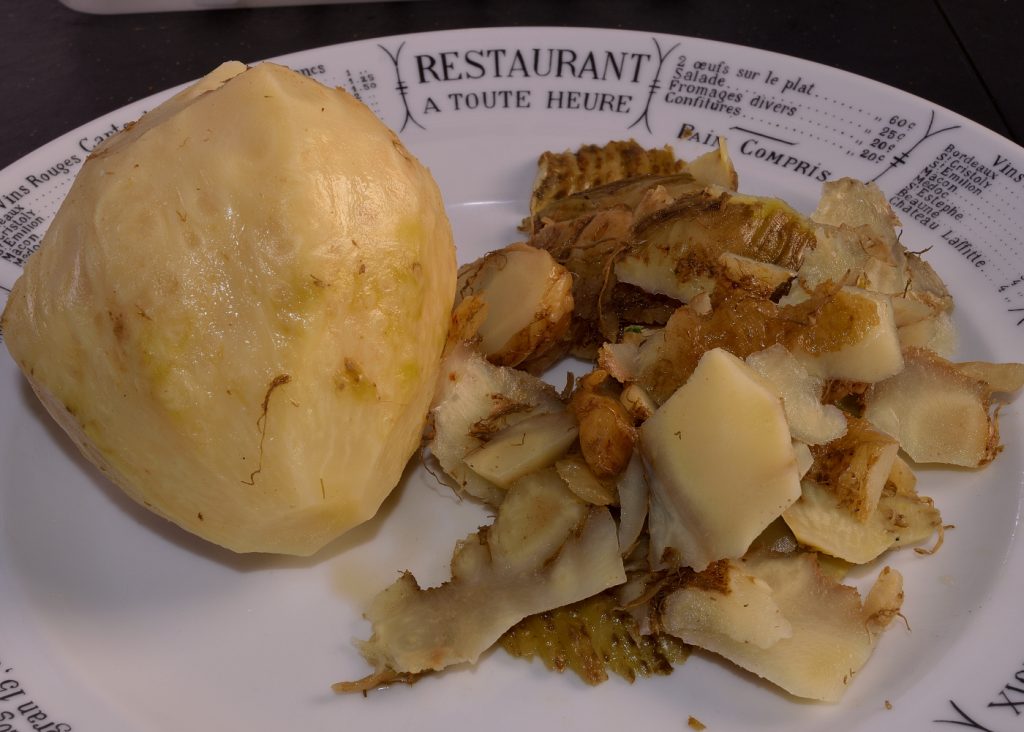
Use a paring knife to remove the discolored exterior. Now you have a measure of freedom.
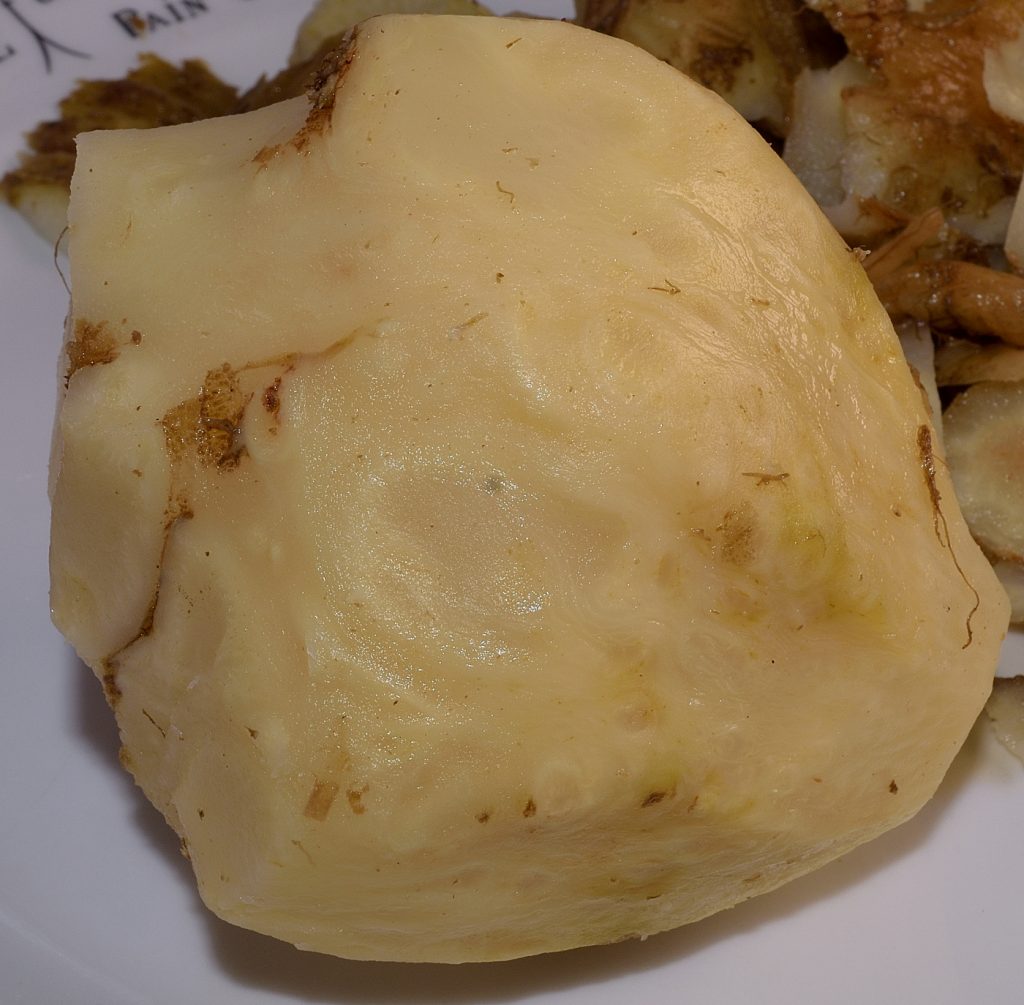
If you are determined to remove ALL the surface, you may not have much celeriac left. It’s not a perfect world.
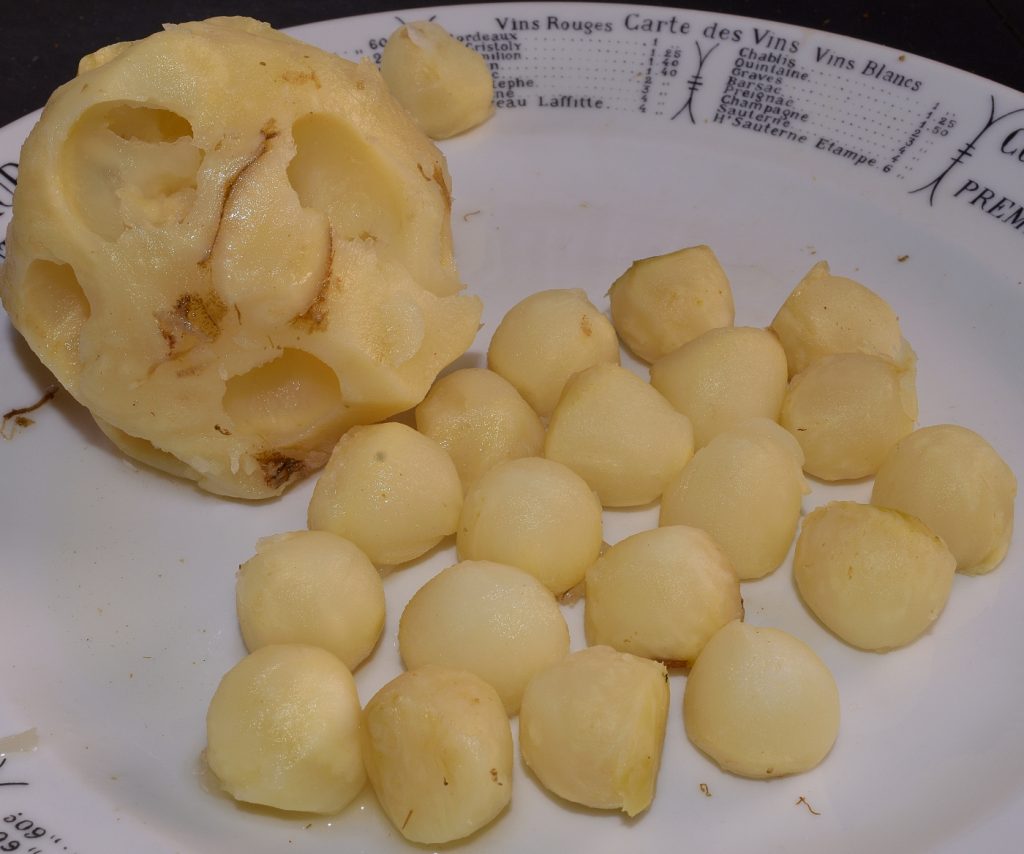
We used a small melon/potato baller to create spheres. This is a rather wasteful process, but do not discard the trim–it has its own purpose.
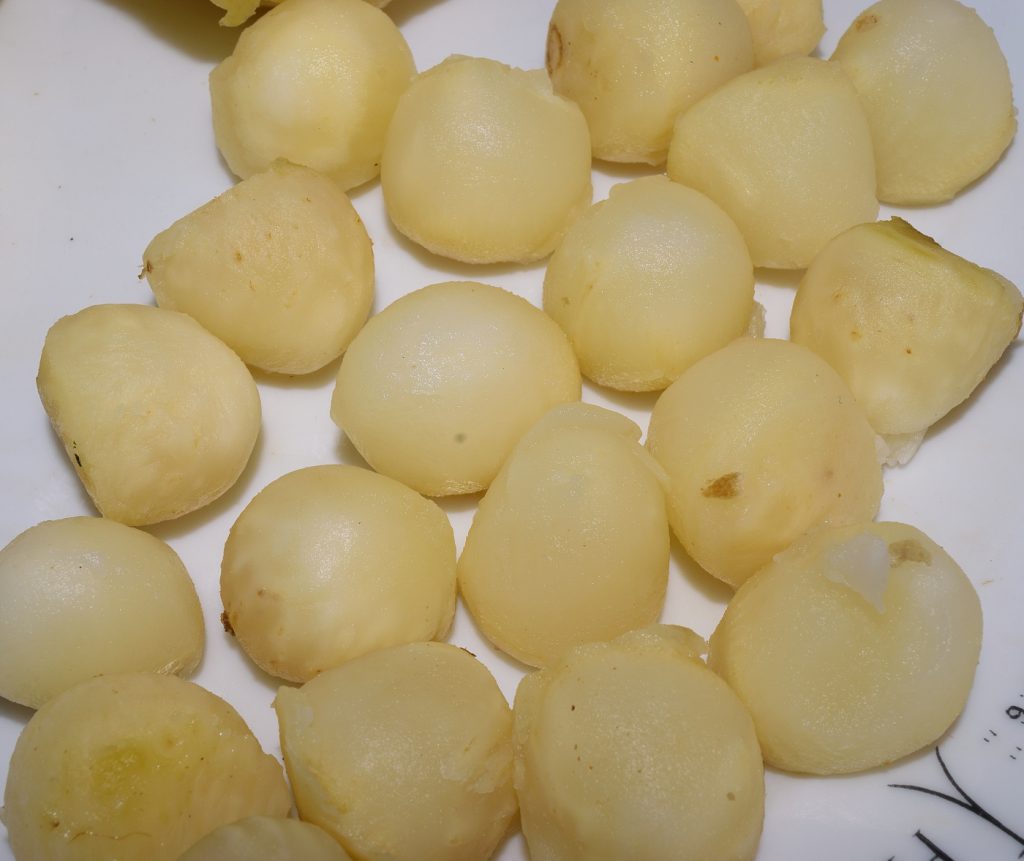
You might be able to cut the spheres from the raw celeriac, but why make life difficult?
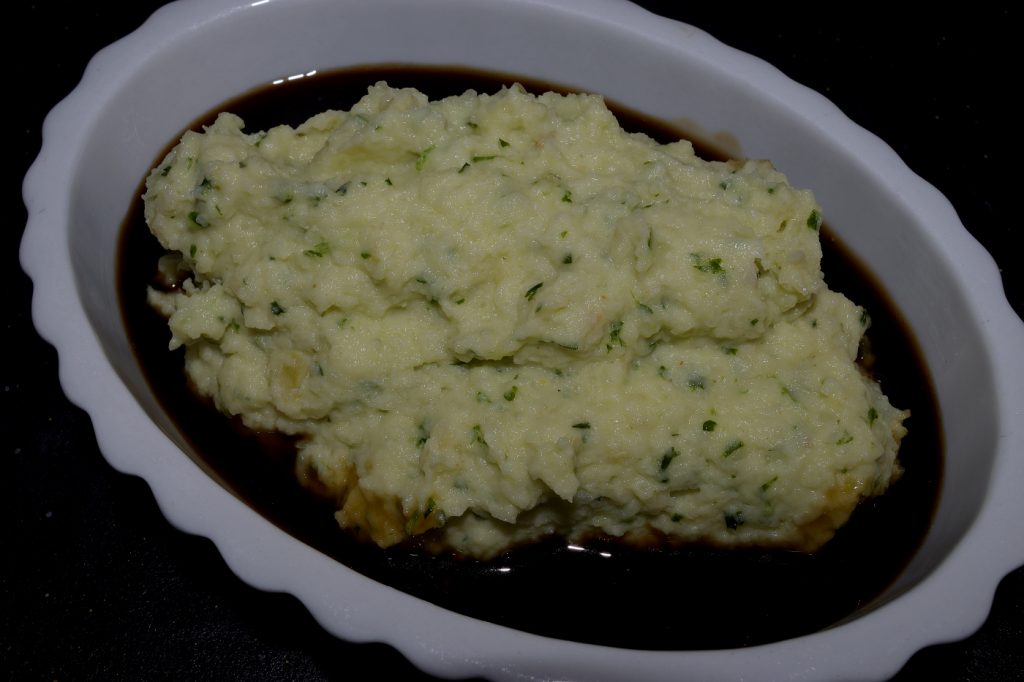
Norm
Visit us live on Facebook at SVR–Sous Vide Resources; Low Temperature Pasteurization, Sous-B-Q™

